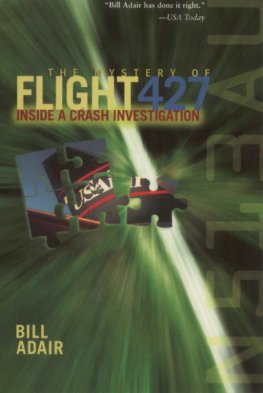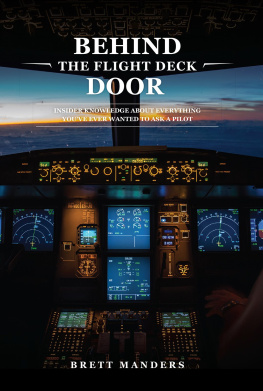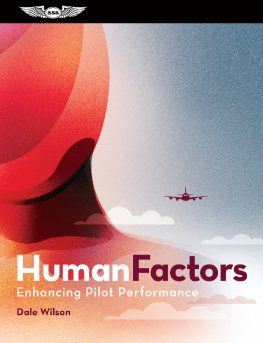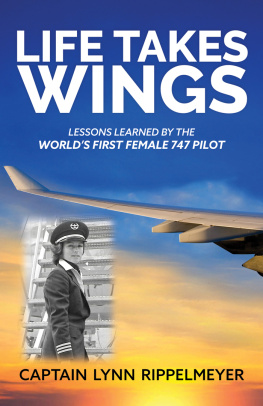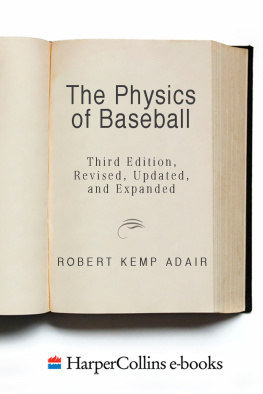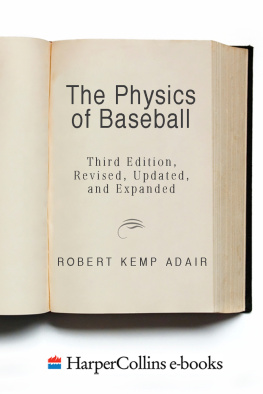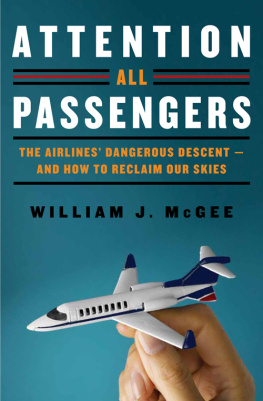Bill Adair
THE MYSTERY OF FLIGHT 427
Inside a Crash Investigation
The important thing to understand about the rudder pedals is that they are unnecessary; like your wisdom teeth, they serve no very good purpose but can cause much trouble.
Wolfgang Langewiesche, 1944

Tom Haueter, John Cox, and Brett Van Bortel made this book possible because of their candor. For six years, they shared their private thoughts about the investigation and how the crash had changed their lives. They endured my frequent visits, telephone calls, and repetitive questions. I thank them for their patience and their willingness to open their lives to thousands of readers. I also appreciate the help I received from Trisha Dedik and Jean Cox, who discussed how the investigation affected their husbands.
I am grateful for the cooperation of the chairman of the NTSB, Jim Hall, and the managing director, Peter Goelz. The agencys public affairs office initially rejected my proposal for a behind-the-scenes look at the investigation, but Hall and Goelz agreed because they believed they had a positive story to tell. They granted me special access to the investigators on the condition that I not publish anything until the report was complete. I also want to thank the NTSB public affairs staff, past and present, including Mike Benson, Pat Cariseo, Ted Lopatkiewicz, and Alan Pollock.
I appreciate the openness of people at Boeing. The company had never cooperated with a project like mine, but several key officials realized it was in Boeings interestand the interest of passengers who fly its planesto tell its side. I appreciate the support of Bill Curry, Liz Verdier, Russ Young, Sue Bradley, John Dern, and Steve Thieme. Boeings historian, Tom Lubbesmeyer, shared the companys memos and marketing materials from the 1960s, which provided tremendous insight into the decision-making process when the 737 was designed. The Boeing engineers and pilots involved in the investigationJean McGrew, John Purvis, Rick Howes, Mike Hewett, Mike Carriker, and Jim Draxlerwere honest about their feelings and frustrations about the NTSB. Because of their candor, I was able to write a more balanced book that reveals the tensions and disagreements of the investigation.
I am thankful for the assistance from people at USAir and the Federal Aviation Administration. At USAir: Rick Weintraub, Deborah Thompson, Dave Supplee, George Snyder, and Ralph Miller. At the FAA: Vikki Anderson, Dave Thomas, Drucella Andersen, Bud Donner, Ed Kittel, Eliot Brenner, Diane Spitaliere, Paul Turk, Bob Hawk, and Ned Preston.
Thanks also to Joe Formoso, Mike Demetrio, Tom Ellis, Michael Pangia, Russ Chiodo, John Kretz, Steve Okun, John Masor, Bob Flocke, and Keith Hagy.
I am deeply grateful to my colleagues at the St. Petersburg Times who helped with my series 28 Seconds, on which this book is based, and to the Times for waiving copyright on the material first published in the series. I am indebted to Richard Bockman and Neil Brown, who helped me shape the early drafts and provided crucial advice on how to tell such a complex story. Thanks also to Paul Tash, Sara Fritz, Chris Lavin, Susan Taylor Martin, Kelly Boring Smith, Bill Serne, Tom Rawlins, David Dahl, Sherry Robinson, Kitty Bennett, and Times attorneys George Rahdert and Allison Steele. I also thank my friend Don Phillips of the Washington Post, who provided help and encouragement along the way.
I am indebted to people who read drafts of the manuscript at various stages, including Pat Trenner, Eric Adams, Peter Wallsten, Scott Moyers, and John Donnelly. My agents, David Black and Gary Morris of the David Black Literary Agency, provided tremendous support during the ups and downs of the past six years. I am especially grateful to Mark Gatlin at the Smithsonian Institution Press for his enthusiasm and persistence about the project.
I thank my in-laws, Frank and Otey Swoboda, for providing me a place to write. My wife, Katherine, provided many valuable suggestions about the manuscript, and she and our children, Molly, Annie, and Miles, tolerated my frequent trips and my six-day workweeks as I finished the book. Well have time to play with the Sega Dreamcast now, guys.

PROLOGUE
A BAD DREAM
Summer 1995Great Falls, Virginia
The clock on the nightstand read 2 A.M., and Tom Haueter was wide awake. He was usually a leaden sleeper, dead to the world once his head hit the pillow. But tonight a nightmare had jolted him awake.
By day Haueter ran the investigation into the crash of USAir Flight 427. He was the consummate man in charge, all confidence and certainty. At night, though, his doubts sometimes overcame him. It had been nine months since the Boeing 737 corkscrewed out of the blue sky over Pittsburgh and dived into a hill at 300 miles per hour, but Haueter still didnt know why it had happened.
He had run many investigations for the National Transportation Safety Board (NTSB), and this one had started like all the restthe peculiar smell of death mixed with jet fuel and the adrenaline rush during the first few days of examining the wreckage. But the rush he received had long since passed. Investigators usually figure out the cause a week or two after a crash, but not this time. They had eliminated one theory after anotherthe promising ones, the far-fetched ones, and a few that were truly bizarreand now it seemed they were back where they had started.
At the NTSB, solving a case was paramount. It was right there in federal law: The board shall report the facts, conditions and circumstances relating to each accident and the probable cause thereof. If an investigator couldnt come up with the cause, he had failed. In the entire twenty-five-year history of the NTSB, only four cases had gone unsolvedand one of those involved a 737.
Indeed, Haueter was accustomed to solving every case, even seemingly impossible ones like the crash in Brunswick, Georgia, that killed U.S. senator John Tower. That case was especially difficult because the evidence was so sketchy. The Embraer 120 plane did not have a flight data recorder or a cockpit voice recorder. Haueter had to rely on radar data and the pilots last words with air traffic controllers. But ultimately the NTSB had found a piece of wreckage, no bigger than a coin, that revealed a flaw in the propeller system.
Many of Haueters colleagues at the board believed that he would never find the answer to the USAir crash. Some thought he should give up. Youve got nothing, one investigator said. Its time to walk.
Maybe it was. He fantasized about quitting. He was fed up with the office politics and the childish sniping between Boeing and the pilots union. He certainly could live without his beeper, without the calls in the middle of the night, and without his job stealing his weekends. It would be good for his marriage.
But his fantasies about quitting didnt last long. He realized there was no way he could leave in the middle of the biggest mystery in NTSB history. His personal and professional pride was on the line. And there were lives at stake.
Haueters bosses were putting immense pressure on him. One of them said that if the USAir case went unsolved, Congress would abolish the NTSB. If the bozos at the board couldnt solve this one, Congress would say, they might as well find a new line of work. That was just the kind of pressure Haueter didnt need. He not only had to figure out whether the worlds most widely used jetliner had a fatal flaw, he also had to save his agency from extinction.

